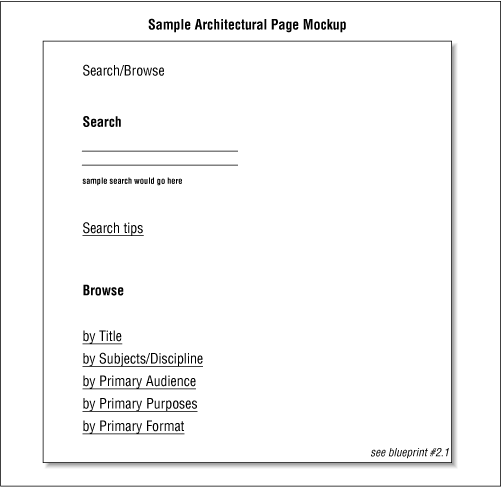Architectural Page Mockups
Information architecture blueprints are most useful for presenting a bird’s-eye view of the web site. However, they do not work well for helping people to envision the contents of any particular page. They are also not straightforward enough for most graphic designers to work from. In fact, no single format does a perfect job of conveying all aspects of an information architecture to all audiences. Because information architectures are multi-dimensional, it’s important to show them in multiple ways.
For these reasons, architectural page mockups are useful tools during conceptual design for complementing the blueprint view of the site. Mockups are quick and dirty textual documents that show the content and links of major pages on the web site. They enable you to clearly (yet inexpensively) communicate the implications of the architecture at the page level. They are also extremely useful when used in conjunction with scenarios. They help people to see the site in action before any code is written. Finally, they can be employed in some basic usability tests to see if users actually follow the scenarios as you expect. Keep in mind that you only need to mockup major pages of the web site. These mockups and the designs that derive from them can serve as templates for the design of subsidiary pages.

Figure 8-4. In this architectural mockup of a combination search/browse ...
Get Information Architecture for the World Wide Web now with the O’Reilly learning platform.
O’Reilly members experience books, live events, courses curated by job role, and more from O’Reilly and nearly 200 top publishers.

